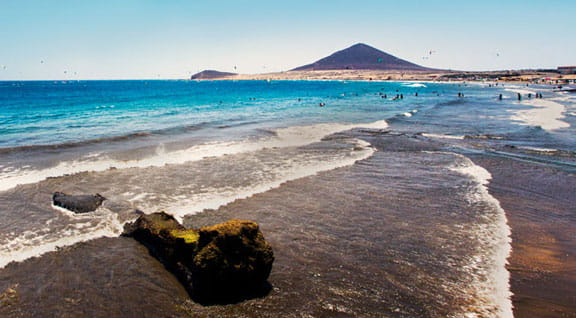The best way to discover the municipality's historic and cultural heritage is to follow na urban route around the historic quarter of Granadilla de Abona. We suggest you start at the Chapel of El Calvario, which was built in 1882 to bless everyone as they entered or left the city. The next stop is the 17th century monastery of San Luis, which was used as a home for the Franciscan monks. Throughout history, the monastery has been destroyed several times (once in 1745, again in 1963 and lastly in the 1990s), after which it was rebuilt and adapted to house the municipal library, an events hall and an exhibition hall. Before heading to the History Museum on Calle Arquitecto Marrero, visitors should stop off at the tobacco drying site, which was built in 1878.
The next landmark in the historic quarter of Granadilla de Abona is the Church of San Antonio de Padua, which is worth visiting to admire the religious artwork inside. Nearby is the spring known as Fuente del Lagar, around which the first of the municipality's hamlets emerged and which was believed to be inhabited by the Guanches due to the convenience of the water supply. The route ends at the water mill, where the power of the water was used to grind the grain. Today, all that remains is the aqueduct measuring roughly 7 m (23 ft), and the old mill house.
Approved trails in the municipality
The intermediate-high level trail PR –TF 72 Vilaflor – Lunar Landscape – Vilaflor runs through Granadilla de Abona. The first 7 km (4.35 miles) of the trail follow an upward path to the Lunar Landscape, also known as Los Escurriales. This stretch is also the last part of the PR –TF 83 Altos de Granadilla trail, which is also recommended for somewhat experienced hikers. This trail sets off from the hamlet of Cruz de Tea and climbs up through some of the best-known landscapes and nature areas in the municipality.
The network of trails known as Los Altos de Granadilla is comprised of three trails that end in Las Vegas. These trails are: the PR TF 83.3, which goes from Risco El Muerto, past Pino del Guirre on a 6.4 km (3.98 mile) hike; the PR TF 83.4, from El Seco, along the path of Camino del Molino for 2.4 km (1.5 miles); and lastly, the PR TF 83.5, which sets off from Los Hibrones and journeys through La Higuera on an 8.4 km (5.22 mile) walk.
